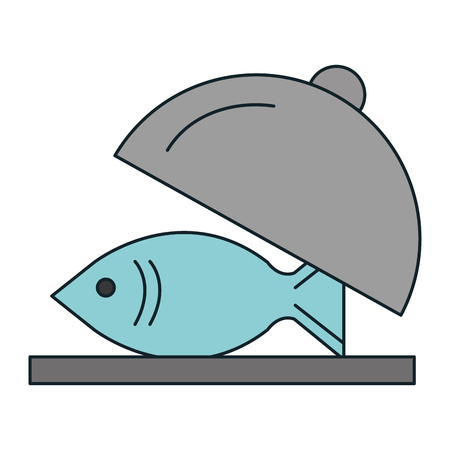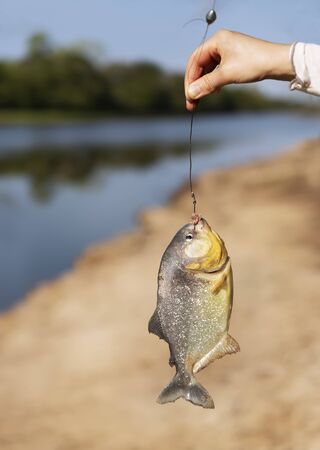1. Understanding the Basics: Difference Between Poles and Rods
When youre just getting started with fishing, the terms “pole” and “rod” might seem interchangeable. But in reality, they refer to two different tools that serve different purposes. Knowing the difference can help you choose the right gear for your fishing style.
What Is a Fishing Pole?
A fishing pole is typically a simple, straight piece of material—often bamboo or fiberglass—with no guides (the small loops along a rod) or reel attached. It’s used mainly for very basic forms of fishing like cane pole fishing. You attach a fixed length of line to the tip and drop it into the water. This setup is perfect for beginners or kids learning how to fish, especially when targeting panfish in ponds or calm waters.
What Is a Fishing Rod?
A fishing rod, on the other hand, is more advanced. It has line guides and usually comes with a reel seat where you attach your reel. This makes it more versatile and suitable for casting longer distances, retrieving lures, and handling larger fish. Fishing rods come in many types depending on what kind of fish youre after—from ultralight rods for trout to heavy-duty rods for catfish or saltwater species.
Main Differences Between Poles and Rods
| Feature | Fishing Pole | Fishing Rod |
|---|---|---|
| Structure | Simple, no guides or reel seat | Includes guides and reel seat |
| Material | Bamboo or fiberglass | Graphite, fiberglass, or composite |
| Use Case | Still water, short-range fishing | Lakes, rivers, ocean; short to long-range casting |
| Skill Level | Beginner-friendly | All levels; more options for advanced anglers |
| Target Fish | Panfish (like bluegill) | Wide range—from trout to bass to saltwater species |
| Line Control | No casting ability; fixed line length only | Casting and retrieving possible with a reel |
Which One Should You Choose?
If youre just starting out or teaching kids how to fish, a traditional fishing pole might be all you need. It’s easy to use and gets you into the action quickly. But if you’re planning to explore different types of fishing—like bass fishing at the lake or surfcasting at the beach—a proper fishing rod with a reel will give you much more control and versatility.
Quick Tip:
If youre unsure which one suits you best, think about where youll be fishing and what kind of fish youre targeting. That’ll help guide your decision between a basic pole and a more functional rod.
2. Material Matters: Graphite, Fiberglass, and Composite Rods
When it comes to choosing the right fishing rod, the material its made from plays a huge role in how it performs. Whether youre casting for bass in a freshwater lake or chasing redfish along the Gulf Coast, understanding rod materials can help you fish smarter. Lets break down the three most common types of rod materials—graphite, fiberglass, and composite—and see how they stack up.
Graphite Rods
Graphite rods are popular among anglers who need sensitivity and quick action. These rods are lightweight and stiff, which means they transmit vibrations from the line to your hand very well—great when youre trying to feel those light bites. However, they can be more brittle and less forgiving under heavy pressure.
Best For:
- Bass fishing
- Trout fishing
- Situations where sensitivity is key
Fiberglass Rods
If youre looking for durability and flexibility, fiberglass rods are your go-to. They’re heavier and bend more than graphite, making them ideal for fighting hard-pulling fish without snapping. They may not offer the same level of sensitivity, but their strength makes up for it.
Best For:
- Beginner anglers
- Saltwater fishing
- Targeting larger species like catfish or pike
Composite Rods
Composite rods blend both graphite and fiberglass to give you a balance of sensitivity and strength. Theyre versatile and can handle a wide range of fishing conditions. If you want one rod that does a little bit of everything, this is probably your best bet.
Best For:
- All-around fishing styles
- Changing water conditions
- Anglers who want performance with flexibility
Rod Material Comparison Table
| Material | Sensitivity | Strength | Weight | Best Use Case |
|---|---|---|---|---|
| Graphite | High | Moderate | Lightweight | Bass & trout fishing where feel matters most |
| Fiberglass | Low to Moderate | High | Heavier | Larger fish, saltwater use, beginners |
| Composite | Moderate to High | Moderate to High | Mid-weight | Versatile anglers needing all-around performance |
No matter what kind of fishing you’re into—whether it’s fly fishing in Montana or trolling offshore in Florida—the right rod material will make a big difference in your experience on the water.

3. Rod Power and Action: Matching Your Fishing Style
When it comes to choosing the right fishing rod, two key factors that often confuse anglers—especially beginners—are rod power and rod action. These features directly impact how your rod performs while casting, setting the hook, and fighting fish. Whether youre chasing bass in a freshwater lake, casting for trout in a mountain stream, or battling saltwater giants, understanding power and action will help you pick the perfect rod.
What Is Rod Power?
Rod power refers to the amount of force needed to bend the rod. It’s often described as light, medium, or heavy. The type of fish you’re targeting and the lures or baits you plan to use should guide your choice.
Common Rod Power Ratings
| Power Rating | Best For | Common Target Species |
|---|---|---|
| Ultra-Light | Small lures & finesse fishing | Panfish, small trout |
| Light | Light tackle & clear water | Trout, crappie |
| Medium | All-around use | Bass, walleye, catfish |
| Medium-Heavy | Larger lures & heavier cover | Largemouth bass, redfish |
| Heavy | Big baits & tough fights | Pike, muskie, inshore saltwater fish |
What Is Rod Action?
Rod action describes where along the blank the rod bends when pressure is applied. This affects sensitivity, casting distance, and hook-setting ability.
Types of Rod Action
| Action Type | Bend Location | Best For |
|---|---|---|
| Fast Action | Top third of rod | Sensitive bites, quick hook sets (great for bass) |
| Moderate Action | Middle of rod blank | Treble-hook lures, crankbaits (ideal for trout) |
| Slow Action | Bends throughout rod length | Lighter lines & small fish (ultra-light finesse) |
Matching Rod Power and Action to Your Fishing Style
Bass Fishing (Freshwater)
Recommended: Medium to Medium-Heavy power with Fast action.
This combo gives you enough strength to pull bass out of cover and fast responsiveness for quick hooksets.
Trout Fishing (Freshwater)
Recommended: Light power with Moderate action.
This provides finesse control for smaller lures and better play on lighter lines without tearing hooks out.
Saltwater Angling (Inshore/Offshore)
Recommended: Medium-Heavy to Heavy power with Moderate to Fast action.
You’ll need strength for bigger fish and fast action for solid hook penetration through tough mouths.
A Quick Tip:
If youre unsure where to start, a Medium power rod with Moderate-Fast action is a great all-purpose setup suitable for many species and techniques.
4. Length and Line Weight: Finding the Right Fit
When it comes to choosing the perfect fishing rod, two things play a big role in how your rod performs on the water: rod length and line weight rating. These factors affect how far you can cast, how accurately you can place your bait, and how much control you have over your catch. Whether youre casting from a boat in a wide-open lake or flipping jigs under tree cover on a small creek, picking the right combination makes all the difference.
Understanding Rod Length
Rod length typically ranges from about 4 feet to over 12 feet. Here’s what different lengths offer:
| Rod Length | Best For | Advantages |
|---|---|---|
| Short (4–6) | Tight spaces, kayak fishing, kids | Better accuracy, easy handling |
| Medium (6–8) | All-around freshwater or light saltwater fishing | Good balance between distance and control |
| Long (8+) | Surfcasting, float fishing, long-distance casting | Increased casting distance, better line control |
If you’re just starting out or fishing in smaller areas like ponds or rivers with lots of overhangs, a shorter rod might be best. On the other hand, if youre surfcasting off the beach or covering large areas of water, go longer.
What Is Line Weight Rating?
The line weight rating tells you what strength of fishing line works best with your rod. It’s usually printed right on the rod blank and looks something like “6–12 lb.” This means the rod is designed to work with lines rated between 6 and 12 pounds of breaking strength.
Why It Matters:
- Too heavy a line: Can overload the rod and reduce sensitivity.
- Too light a line: May not have enough power to handle stronger fish or could break easily.
Matching Rod Length & Line Weight to Your Fishing Style
Your fishing environment and target species help determine the best combination. Heres a quick guide:
| Fishing Type | Recommended Rod Length | Suggested Line Weight |
|---|---|---|
| Pond/Lake Fishing (Bass, Panfish) | 6–7 | 6–12 lb |
| River Fishing (Trout) | 5–7 | 2–8 lb |
| Saltwater Inshore (Redfish, Snook) | 7–8 | 10–20 lb |
| Surf Fishing | 9–12 | 15–30 lb |
The key takeaway? Think about where youll be fishing and what youre after. Then choose a rod length and line weight that gives you the right mix of reach, accuracy, and strength. The better your setup matches your style, the more fun—and success—you’ll have out there.
5. Specialty Rods for Techniques and Species
Not all fishing rods are created equal—some are specifically designed to match certain fishing techniques or target species. Whether youre casting in the ocean surf, drilling a hole through the ice, or stalking trout with a fly rod, using the right specialty rod can make your experience smoother and more successful.
Technique-Specific Rods
Different fishing styles require different rod features. Heres a quick breakdown of rods tailored for popular techniques:
| Fishing Style | Rod Type | Main Features |
|---|---|---|
| Fly Fishing | Fly Rod | Long, flexible rod designed for casting lightweight flies using specialized lines. |
| Surf Fishing | Surf Rod | Extra-long rods (typically 9-14 feet) built to cast heavy baits far into the surf. |
| Ice Fishing | Ice Rod | Short, stiff rods (about 24-36 inches) made for fishing through holes in ice. |
Species-Specific Setups
If you’re targeting a specific type of fish, some rods are built just for that. These rods are engineered with the strength, sensitivity, and action needed to handle the behavior of certain species.
| Target Species | Recommended Rod Type | Key Characteristics |
|---|---|---|
| Bass | Bass Rod (Casting or Spinning) | Medium-heavy power with fast action; good backbone for hooksets. |
| Trout | Ultralight Spinning Rod | Sensitive tip, light line compatibility, ideal for finesse presentations. |
| Catfish | Heavy-duty Spinning or Casting Rod | Strong backbone to fight large fish; often longer with reinforced guides. |
| Tuna or Saltwater Big Game | Saltwater Offshore Rod | Built tough with corrosion-resistant components; high power and durability. |
The Right Tool for the Job
Selecting a rod that aligns with your preferred technique and target species ensures better control, comfort, and success out on the water. Whether youre planning a weekend at the lake or an offshore adventure, theres a specialty rod out there made just for you.
6. Helpful Tips for Beginners and Buying Your First Rod
If you’re just getting into fishing, choosing your first rod can feel a bit overwhelming. There are tons of options out there, but don’t worry—we’re here to help you pick the right one without breaking the bank.
Start with Your Fishing Style
Before buying a rod, think about where and how you’ll be fishing. Are you going to fish in freshwater lakes for bass or panfish? Or maybe youre planning on saltwater fishing at the coast? Here’s a quick breakdown:
| Fishing Type | Recommended Rod Type |
|---|---|
| Freshwater (Lakes & Rivers) | Spinning rod (medium power, 66″ – 7) |
| Saltwater (Piers & Surf) | Surf casting rod or heavier spinning rod (7 – 10) |
| Backyard Ponds or Easy Access Areas | Light spinning rod (56″ – 6) |
Set a Realistic Budget
You don’t need to spend hundreds of dollars for a good starter rod. A solid beginner setup can cost anywhere from $30 to $100. Combo kits (rod and reel together) are great for beginners and often provide better value.
General Price Guide for Beginners
| Price Range | What You Get |
|---|---|
| $30 – $50 | Basic combo setups, good for casual weekend fishing |
| $50 – $80 | Better materials, more comfortable grip, smoother reels |
| $80 – $100+ | Durable rods from trusted brands, ideal for learning and growing into the sport |
Stick with Reputable Brands in the U.S.
Some well-known brands that offer reliable rods for beginners include:
- Ugly Stik (by Shakespeare): Known for durability and great for beginners.
- Berkley: Offers affordable combos that are easy to use.
- Penn: Great for saltwater beginners—rugged and dependable.
- Daiwa: Makes quality beginner-friendly gear at various price points.
- Abu Garcia: Solid reputation with good performance in both fresh and saltwater models.
Where to Buy Your First Rod
Online Options:
In-Person Shopping:
- Bass Pro Shops & Cabela’s Stores: Staff can offer helpful advice in person.
- Walmart: Carries budget-friendly combos perfect for casual anglers.
- Your Local Bait & Tackle Shop: Great place to get personalized recommendations based on local fishing spots.
The key is to start simple. Find something comfortable, durable, and matched to your fishing plans. With the right setup, you’ll have more fun learning the ropes and catching your first fish!


